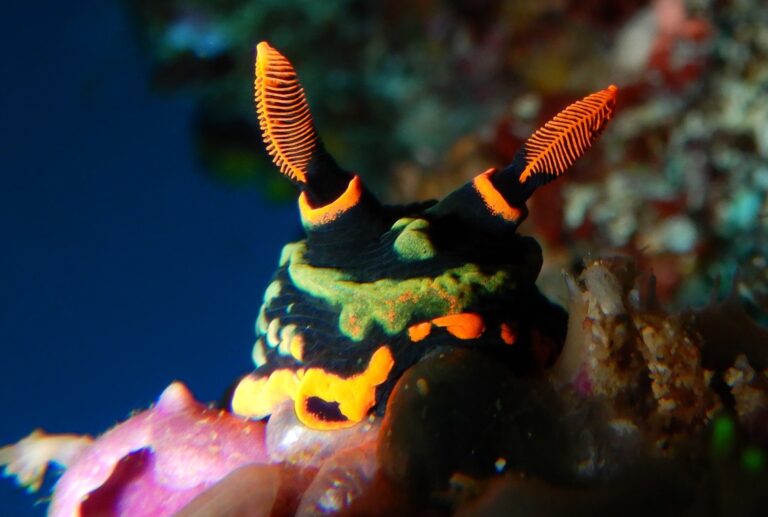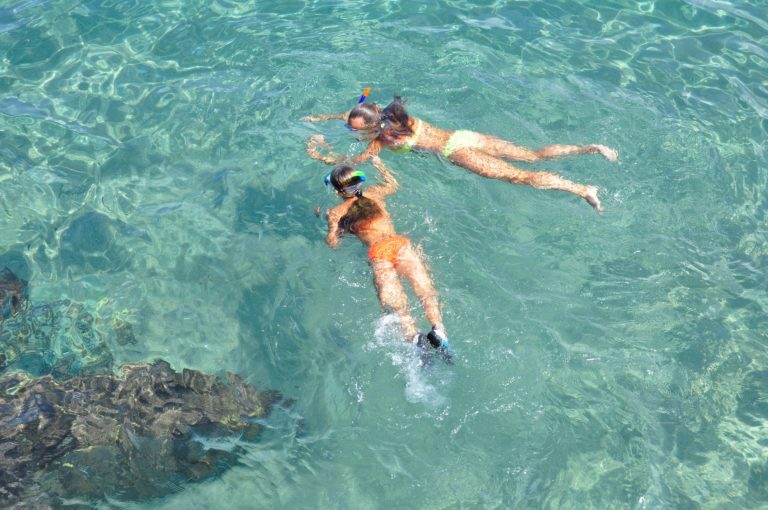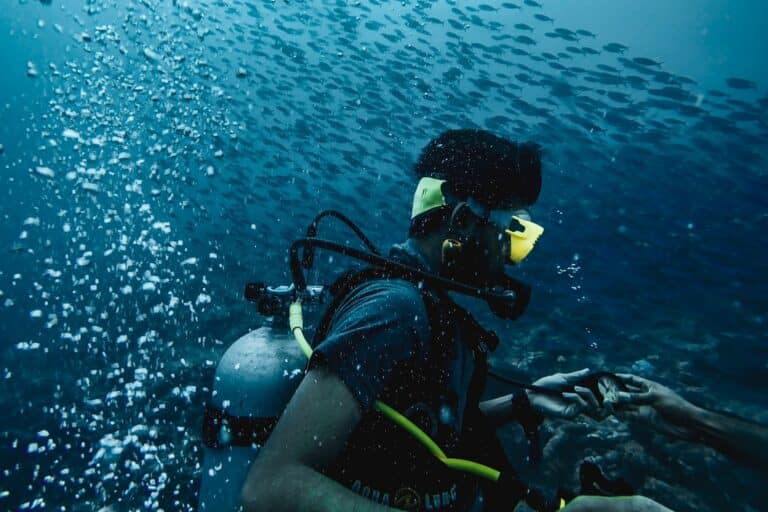WHERE ARE WE GOING?
Today we are diving in Sulawesi, Bunaken National Park, which is close to Manado City, North of Sulawesi in Indonesia.
WHY ARE WE DIVING IN SULAWESI, BUNAKEN NATIONAL PARK?
Sulawesi is an Indonesian island east of Borneo, which comprises of several long peninsulas radiating from a mountainous center. This means there is some amazing diving in Sulawesi, and Bunaken National Park is a top choice for diving in this region.
Bunaken National Park is a marine park in the north of Sulawesi island. It is located close to the center of the Coral Triangle. It is known to have the 2nd largest marine biodiversity in the world. Many turtles (Green & Hawksbill) can be spotted here with passing blacktip and white tip reef sharks.
Bunaken National Park is also home to some macro life. Hippocampus pontohi (one of the smallest pygmy seahorses species), are often spotted here. Warty frogfishes and clownfishes have also been spotted on the walls.
The diving is reef wall diving where often, the bottom is not visible.

HOW DO WE GET THERE?
To go diving in Sulawesi, you can fly from Singapore to Manado City 4 times a week. You can also catch a direct flight from Bali (Denpasar), Jakata, and Sorong. The airport is about 1.5 hours away from Tasik Ria Resort where we dived from.

WHICH DIVE SITES ARE MUST-SEE?
Mainland
Critter Circus I
The house reef of Tasik Divers (where I worked) boasts a variety of marine life. Our house reefs spans quite a distance and is broken up into 3 sections. It is a goldmine for muck diving where you be finding critters in the sand and seagrass. Here, we can find pairs and pairs of Ornate Ghost Pipefishes, Robust Ghost Pipefishes, the elusive Lembeh Sea Dragon, the tiny Shaun the Sheep Nudibranchs, spearing Mantis Shrimps, Peacock Mantis Shrimps and often, multiple cuttlefishes. This where we have had divers stay in one spot for over an hour and come up excited from all the little things they have seen!
Critter Cirus II
Right next to Critter Circus I is Critter Circus II. They might be located next to each other but the topography is vastly different. This dive site is covered in healthy hard coral. At the start of the dive, you’d be greeted with Staghorn corals (Acropora) that start at around 3m, going down to around 18m in depth. These corals are homes to schools of fusiliers, damselfishes snappers and groupers! If check some of the sponges here, you might be lucky to find 1 or 2 Giant Frogfishes camping out! And if you’re lucky, you might even see them mid-yawn!
Tanjung Kelapa
About 20 minutes away by speedboat lies our team’s favorite mainland dive site. It is said to have some of the richest Marine Life biodiversity, just behind Raja Ampat and Bunaken National park. We start the dive site along a sloping reef with coral bommies, seagrass, and patches of sand. You can find an abundance of lionfish, various ghost pipefishes, moray eels, cuttlefishes, nudibranchs and the occasional octopus. After spending about 20minutes here, the guide would most likely inch toward the mini wall. It is covered in sea fans, whip corals, anemone with school of midnight snappers, blue-spotted travellies, bumphead parrotfishes, redtooth triggerfishes and the passing Napolean Wrasse. Many nudibranchs, shrimps and crabs can be found here too.
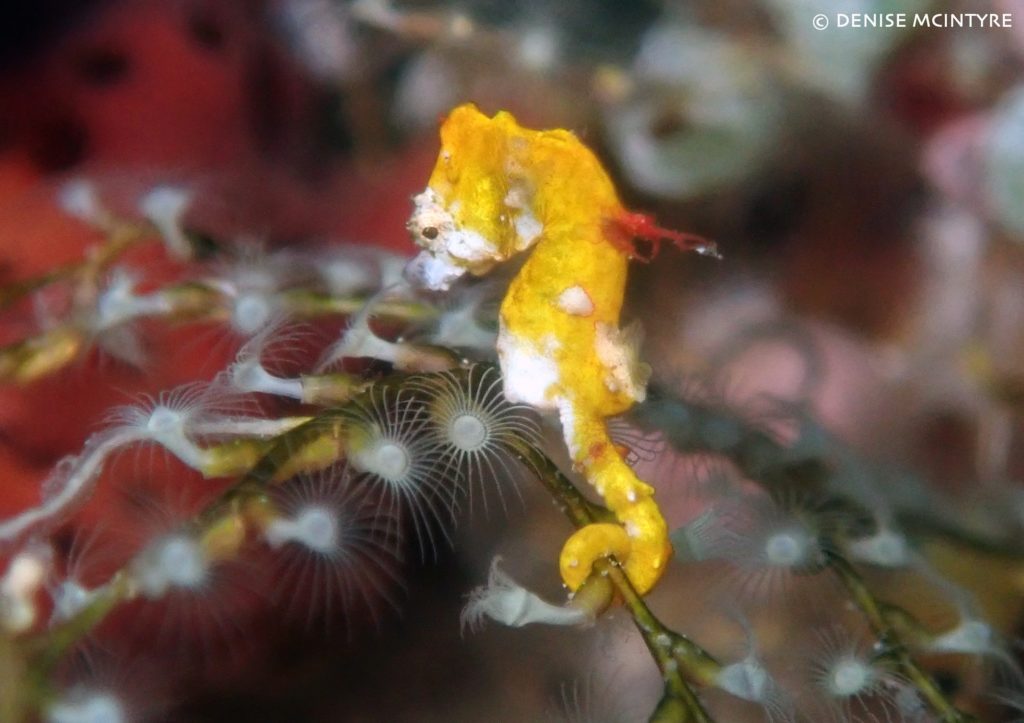
Bunaken Dive Sites
Lekuan 2
There are 3 Lekuan dive sites but Lekuan 2 in particular, is a crowd favorite. Lekuan means elbow, or bend. The dive site is a wall that drops further than one can see. At some points of the site, the wall is less steep and one can see what seems like the bottom. On the walls, you can find scorpionfishes, leaf fish, Gorgorian Seafans and whip corals. In the blue, have a look out for passing white tip reef sharks and turtles!
Celah Celah
Celah Celah means crack – sort of like the space between tiles on the floor. This dive site is wall dive with cracks that go into the wall by almost 7m. These are caves as there’s always direct excess to the surface, even in the cracks themselves. It definitely is a unique experience to be hovering in the crack while looking out into the blue. At Celah Celah, in the blue, we also get the usual larger pelagics passing by – Whitetip reef sharks, blacktip reef sharks, eagle rays, green turtles and hawksbill turtles.
Read More: Everything You Need to Know About Spotted Eagle Rays!
Fukui Point
Fukui Point is the only sloping reef dive site in Bunaken National Park. All other dive sites are walls. Fukui is the name of a Japanese lady who found this dive site many years ago. At the start of the dive, one would notice some artificial reef formations between 3-8m. Part of the reef was destroyed by unethical fishing methods some time ago and the damage can still be seen today. These artificial reef formations were set up for coral propagation in an attempt to offset the damage that was done by the illegal fishing. The artificial reef now attracts a school of snappers that tend to stay near the shallows and under the mooring line. As you continue on the dive, divers will be greeted by stunning healthy corals that are covered in both hard and soft corals. Have a look at the barrel sponges as we often find resting turning in them or on them. At 18-20m (tide dependent), divers can also find a large giant clam! It’s definitely a sight to see.
Bunaken Timur
Timur means east in Indonesian, and this dive site is located at the east of Bunaken National Park. The shallows of this dive site boast healthy soft coral and hence the nursery to many juvenile reef fish. So don’t be surprised if your dive guide spends most of their dive at 10m. Unlike the rest of the walls on Bunaken Island, there’s a larger variety of Nudibranchs on these walls. Aside from the various Chromodoris species that are abundant on the walls, have a closer look and you’ll find Coryphillina exoptata, Nembrothas and many more.
Manado Tua (Muka Gereja)
Manado Tua is a volcanic island located to the west of Bunaken Island and still falls within the Bunaken National Park. Tua means old so essentially, Manado Tua is the old Manado. A long time ago, a lot more people lived on Manado Tua but after an eruption, most of its population fled towards mainland Manado and live in what is now known as Manado City. We start the dive in front (muka) of a church (Gereja) and continue as a drift dive – wherever the current takes us. On the walls, look out for Giant Frogfish, flatworms, orangutan crabs, nudibranchs and in the blue, as always… the usual pelagics – Whitetip reef sharks, blacktip reef sharks, and eagle rays!
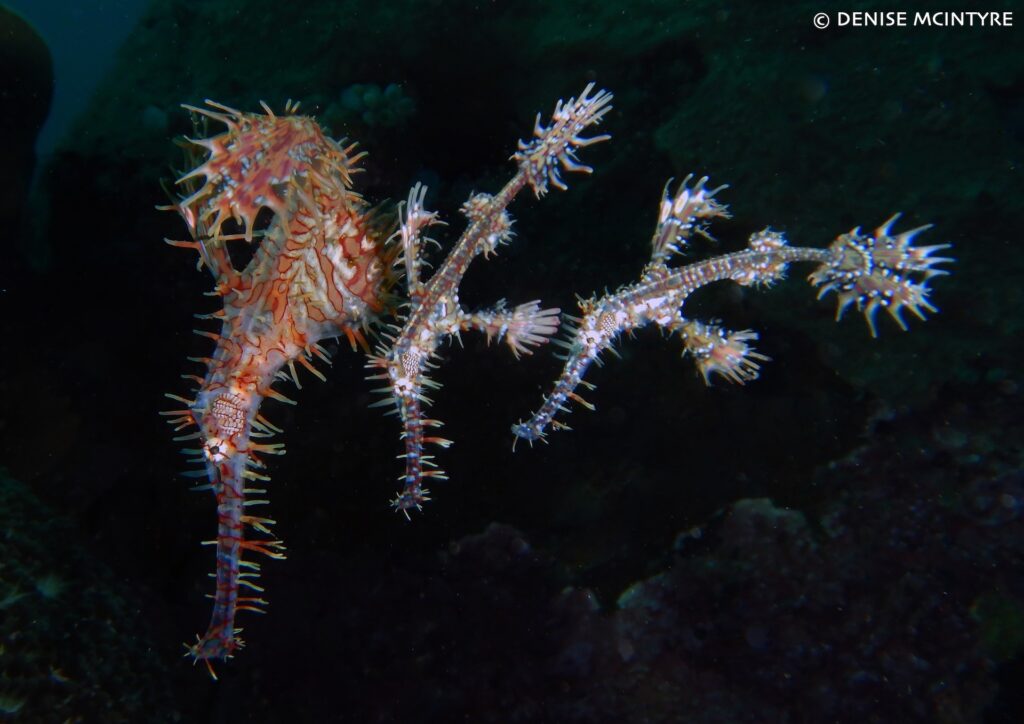
DO I NEED ADDITIONAL EQUIPMENT?
When diving in Sulawesi, the temperature ranges between 26-30° Celcius and a 3mm wetsuit is sufficient. Some people can go in shorts and a rash vest. Just be wary that there is an abundance of hydroids and fire coral so make sure you are comfortable with your buoyancy!
It is best to bring your own dive equipment. Rental for a full set of equipment can set you back by about 20-50 USD/Day.
WHAT LEVEL CERTIFICATION SHOULD I BE?
Most dive sites are easy and an Open Water certification (18 meters) is sufficient but as Bunaken is mainly wall diving, being an Advanced Open Water certified (30 meters) will give you the freedom to explore slightly deeper.
WHAT ARE THE CONDITIONS?
The water temperature is generally 26-30°C.
The best diving in Sulawesi is from February to October. Then the rainy season starts. Diving is still possible but visibility may be reduced.
Visibility averages a solid 20-35 meters.
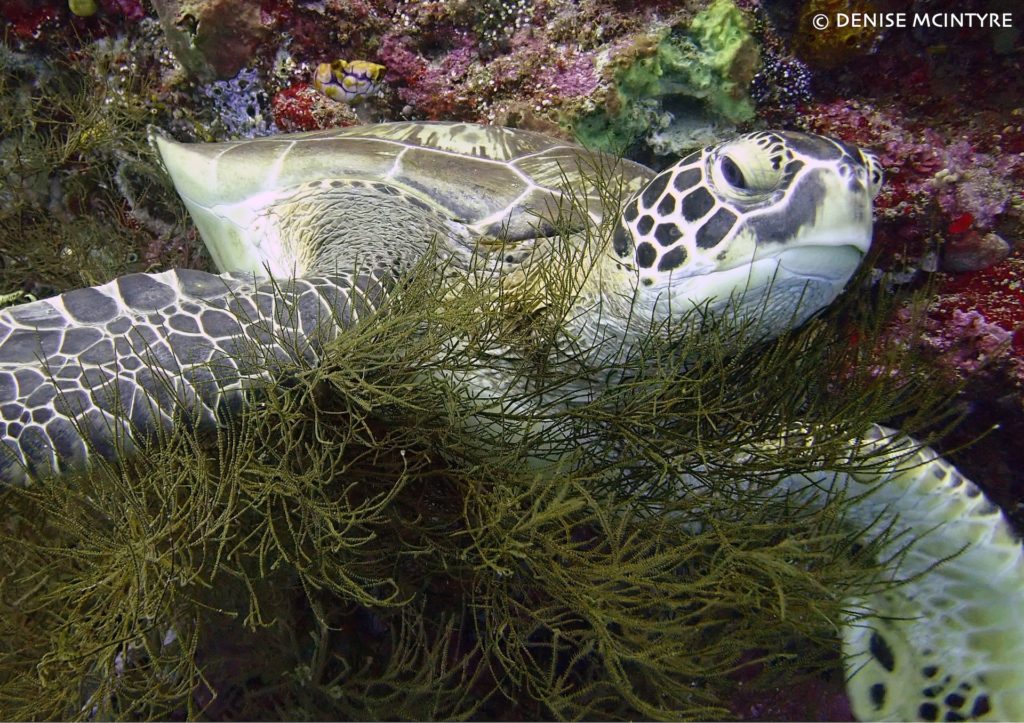
HOW MUCH WILL I SPEND?
When diving in Sulawesi around Bunaken National Park, the price will average about 100 USD for 3 dives including lunch.
A full dive package of 5 Days / 4 Nights with 9 dives including accommodation and meals can cost around 550 USD.
TELL ME MORE
Tasik Ria Manado, the dive center where I worked, is 1 hour 15 mins away from the airport in average traffic. The resort is located on mainland Manado but away from the hustle and bustle of the city.
The dive center is about 45mins away from Bunaken National Park via speedboat and about 1 hr 20mins away via their big boats. The big boats are very comfortable with a kitchen onboard so meals and are cooked and served hot in between surface intervals.
Tasik Ria Manado also has an incredible house reef and is close to a few mainland dive sites that boast a wide variety of macro life. Cuttlefishes, nudibranchs, ornate ghost pipefishes and octopuses.
Other dive center options include Eco Divers Manado and Lumba-Lumba on the mainland and Siladen Resort and Two Fish on Bunaken National Park itself.
WHAT TYPE OF ACCOMMODATION IS AVAILABLE?
The area is mainly resorts with individual bungalows or similar to a hotel room set-up. It is best to stay where you dive as there will usually be diving and accommodation packages.
There are little to no hostel and guest houses available in the area.
WHERE DID YOU STAY?
I stayed in Tasik Ria Manado in 2 different room types; the Garden View and their Pool View rooms. The garden view rooms cost approximately 50 USD/Night and pool view rooms at 75 USD/night.
They are comfortable rooms with hot water and a/c.
WHAT DO WE DO ON SURFACE INTERVALS?
When you’re not diving, you can go snorkeling around Bunaken National Park! But if you are looking for some land activities, you could always check out Mount Tumpa, and hike up to the observation deck to give you an amazing view of the surrounding islands. There’s also a waterfall to visit, the Ratahan Telu Waterfall, and you can also try rafting at Timbukar down the Nimanga River!
